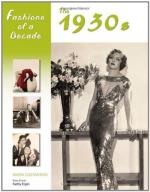|
This section contains 386 words (approx. 2 pages at 300 words per page) |

|
Nothing reflects the structural and philosophical impasse of the 1930s better than the debate over the role of labor in the economy. The United States has historically had some of the most severe industrial warfare in the West. Economic orthodoxy denied the right of labor to organize, collectively bargain, or strike. Industrialists consistently articulated the idea that labor was secondary to capital in the productive process; labor was cheap and replaceable; wages were necessarily low, in order to discipline the workforce. The American System tempered this philosophy somewhat, as management assumed a new paternalism toward labor. But the productive gains of labor during the 1920s were not reflected in rising wages, and with the stock-market crash the facade of paternalism dissolved. Treasury Secretary Andrew Mellon almost immediately urged that management liquidate labor. By 1933 more than a quarter of the labor force was unemployed, and much of the...
|
This section contains 386 words (approx. 2 pages at 300 words per page) |

|




